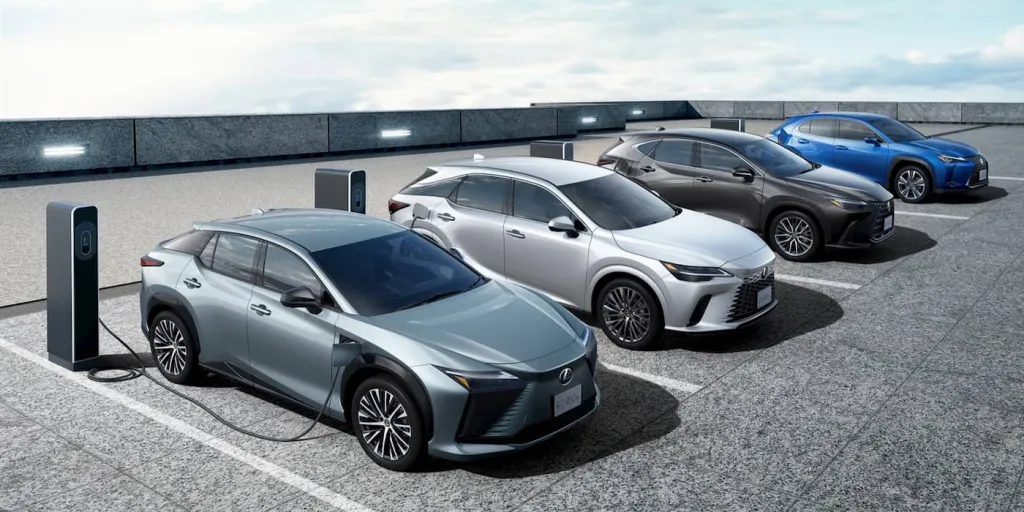Toyota’s global sales fell over 5% last month, partly driven by the impact of BYD’s price cuts in key markets like China, Southeast Asia, and even Japan.
Toyota, including Lexus, sold 853,082 vehicles last month, down 5.1% from June 2023. Although demand remained strong in North America and Europe, pressure in Japan and China led to fewer sales.
The Japanese automaker’s global sales are down 0.9% year-over-year through the first half of 2024.
After recalling the Prius earlier this year, Toyota sold slightly fewer (-1.6%) vehicles in North America. Meanwhile, sales were up 14.6% through the first half of the year.
Despite growth in Europe (+2.7%) and Latin America (+6.5%) last month, Toyota’s sales were hit hard in Asia, its biggest market. Last month, Toyota’s sales fell 7.2% in Asia (269,317), with 13% and 11% declines in two of its most critical markets, China and Thailand.
Toyota blamed the fallout on the “challenging market environment” and “intensified price competition” in the region.

Toyota sales hit in 1H 2024 with BYD’s EV price cuts
Toyota’s sales are down by double-digits through the first half of 2024 in China (-10.8%), Indonesia (-10%), and Thailand (-15%).
Toyota’s sales decline in Asia comes as Chinese EV makers, including BYD’s aggressive price cuts, are squeezing foreign automakers out of the market.

BYD set a new sales record last month, with 341,658 new energy vehicles (NEVs) sold, up 35% YOY. BYD sold 145,179 all-electric cars, up 13% YOY. Through the first half of 2024, BYD has sold over 726,000 EVs, up 18% from last year.
After declaring a “liberation battle” on gas-powered cars earlier this year, BYD’s aggressive price cuts are making it hard for legacy automakers to compete.

BYD’s lowest-priced EV, the Seagull, starts at just $9,700 (69,800 yuan) in China. In overseas markets, like Brazil, it starts at around $20,000.
With other affordable EVs, like the Dolphin and Atto 3, rolling out in overseas markets, BYD is quickly gaining market share in key auto markets like Thailand, Indonesia, and Latin America.
BYD also recently launched its first electric MPV in Indonesia. Starting under $25,000, BYD’s M6 arrives as EVs continue gaining market share.

BYD is even gaining market share in Toyota’s home market. According to the Japan Automobile Importers Association (JAIA), Japan’s EV imports rose 17%, accounting for nearly 10% of cars shipped to the nation in the first half of 2024.
With passenger car imports surging 184%, BYD led the charge. Last month, BYD launched its third EV, the Tesla Model 3-rival Seal, in Japan, starting at $33,100 (¥5.28 million).

BYD’s Atto 3 electric SUV and Dolphin start at $30,000 (¥4.4 million) and $24,500 (¥3.63 million), respectively. The Chinese EV maker is now No. 14 among Japan’s top auto importers, up from 19 last year.
Electrek’s Take
Is BYD beating Toyota at its own game? New research from Bloomberg Intelligence (BI) suggests BYD will take back the global sales crown from Tesla sooner rather than later as it continues to build momentum in 2024.
Although BYD is best known for its low-priced electric cars, the automaker is launching vehicles in almost every segment.
BYD is launching the Sea Lion 07, a Tesla Model Y-like mid-size electric SUV, its first pickup truck, the Shark PHEV, and luxury EVs.
By the end of 2024, BYD plans to double its retail footprint in Japan. And that’s only the start. As it expands overseas, BYD is building massive plants in Thailand, Turkey, Mexico, and more.
Will BYD continue squeezing Toyota out of the market? Or will Toyota catch on? The company is reportedly planning a new EV battery plant on Japan’s “Silicon Island” to supply batteries for Lexus and export to overseas markets.


